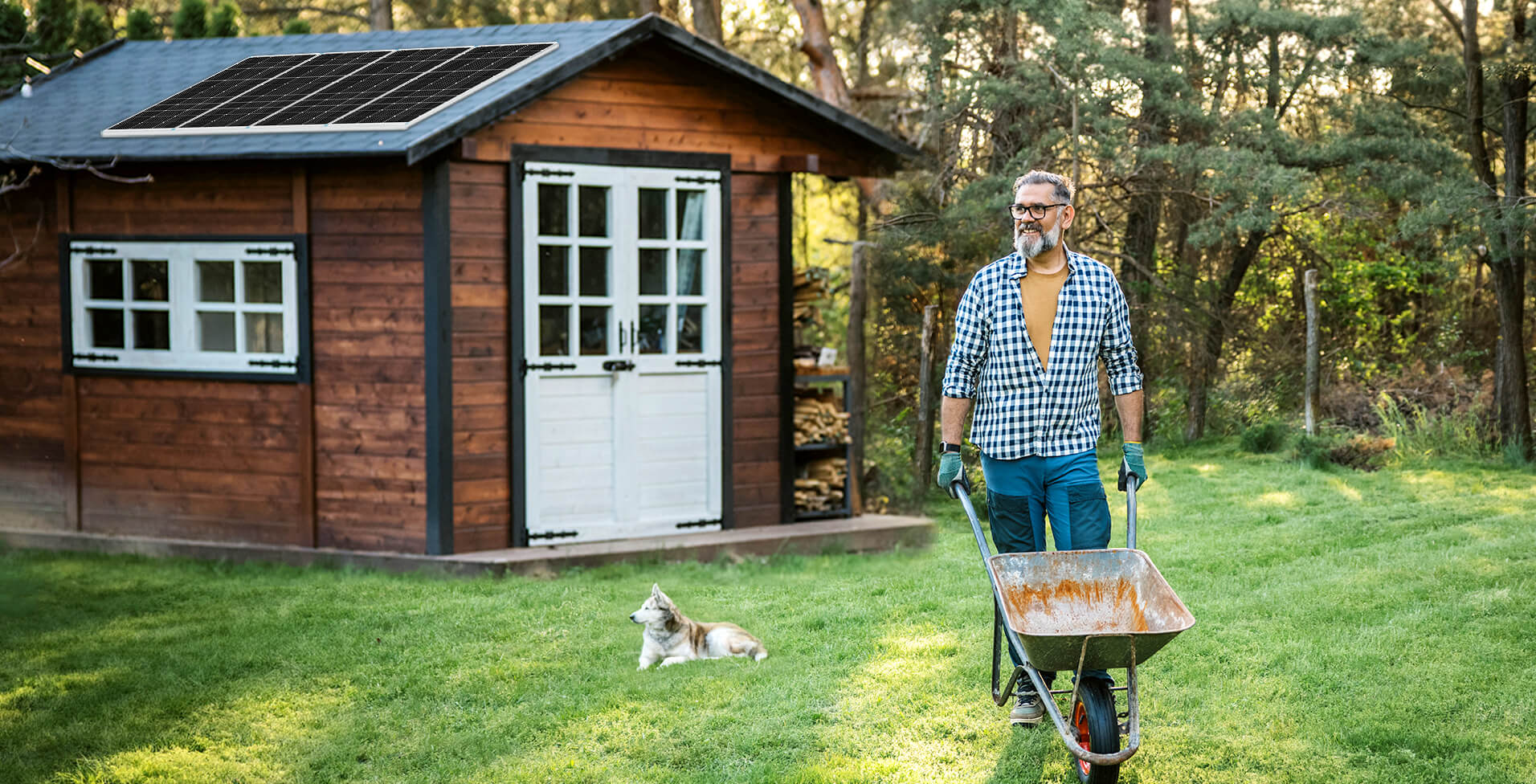





























Package Includes
- If you have any questions regarding this product, please call us at 1 (909) 287-7111 or submit a ticket for troubleshooting assistance.
- More questions about your off-grid power system? Learn more from Renogy Learning Center!
Maximum Power at STC: 100W
Open-Circuit Voltage (Voc): 24.3V
Short-Circuit Current (Isc):: 5.21A
Optimum Operating Voltage (Vmp): 20.4V
Optimum Operating Current (Imp): 4.91A
Dimensions: 41.80 x 20.90x 1.40 inch/1062 x 531 x 35mm
Maximum System Voltage: 600VDC
Weight: 6.4kg/14.1lbs
Nominal Voltage: 12V/24V DC Auto Recognition
Battery Type(s): Sealed (AGM), Gel, Flooded, and Lithium
Rated Charging Current: 40A
Rated Load Current: 20A
Max. PV Input Power: 520 W (12V Battery);1040W (24V Battery)
Max. PV Input Voltage: 100VDC
Operating Temperature: -31°F to 113°F /-35°C to 45°C
Max.Terminal Size: 6 AWG -8 AWG
Overall Dimension: 9.38 x 6.78 x 3.05 inch / 238 x 172 x 77 mm
Weight: 4.4 lbs/ 2.0kg
Battery Type: AGM
Rated Capacity: 100Ah (10 Hour Rate to 10.5V)
Nominal Voltage: 12V
Cycle Use Voltage: 14.4V~14.8V
Self-discharge Rate (77°F/25°C): <3%/month
Max. Discharging Current: 1100A (5s)
Battery Type: Lithium Iron Phosphate
Rated Capacity (0.5C, 25°C): 100Ah
Nominal Voltage: 12.8V
Cycle Life (0.5C/1C, 25°C): 5000 Cycles (80% DOD, 80% EOL)
Maximum Charge Current: 100A
Max. Discharging Current: 100A
Battery Type: Lithium Iron Phosphate
Rated Capacity (0.5C, 25°C): 100Ah
Nominal Voltage: 12.8V
Cycle Life (0.5C/1C, 25°C): 4000 Cycles (80% DOD)
Maximum Charge Current: 50A
Max. Discharging Current: 100A
Self-heating: Yes
opc:
Continuous Output Power: 3000W
Surge Rating: 6000W
Input Voltage: 12V DC
Output Voltage: 115V AC
Efficiency: >90%
Output Frequency: 60Hz
FAQ
A solar panel has to be connected a charge controller to regulate current, and a battery to store the electrical power. You will need adapter kit cables to wire the solar panel(s) and charge controller, and tray cables connecting the charge controller to a deep-cycle battery.
On-grid simply means solar power equipment (array or solar panel) is connected to the electrical grid, while off-grid refers to systems that are not connected to the grid and therefore store the generated power for later use. Off-grid systems are not affected by grid blackouts.









































